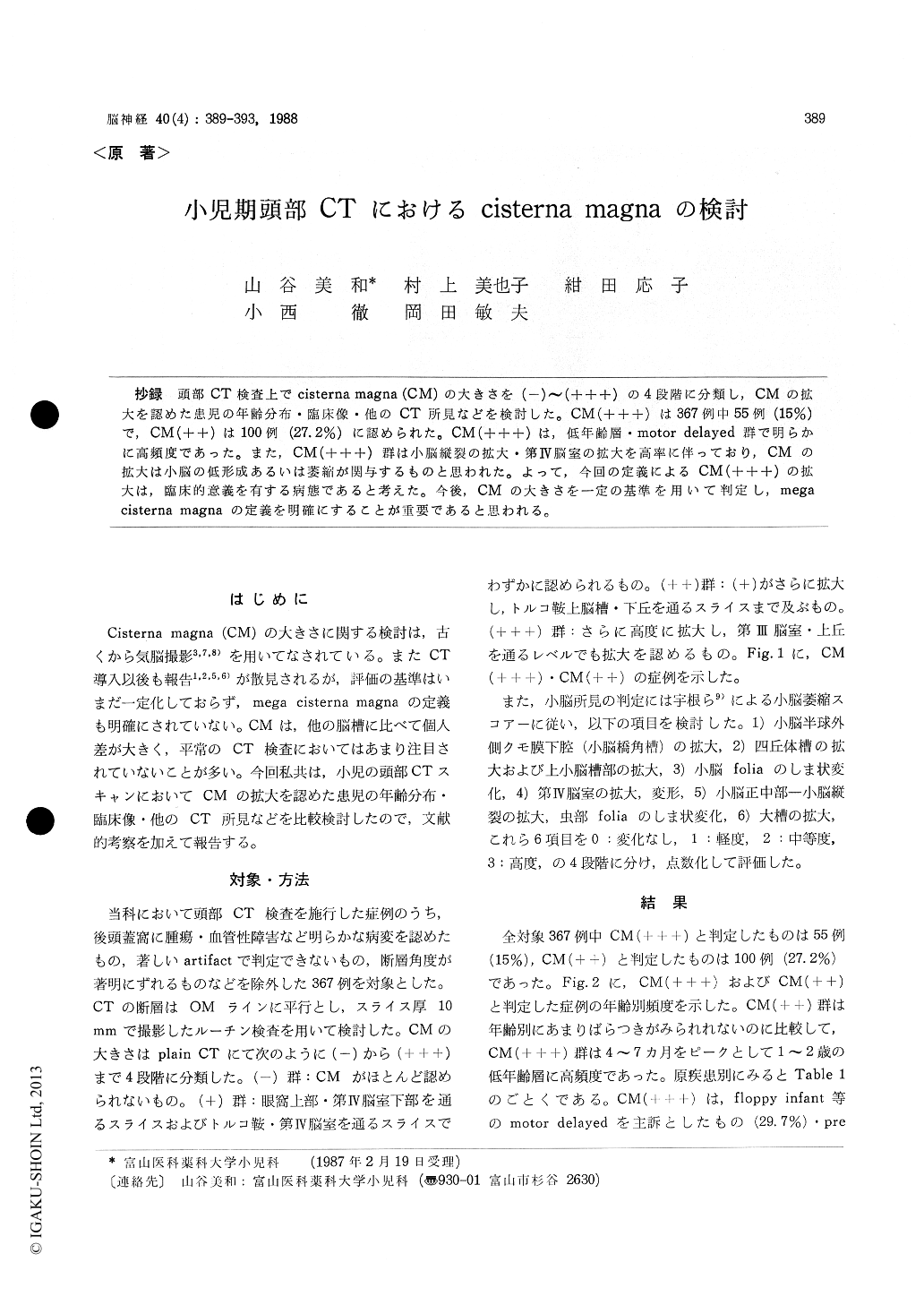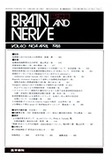Japanese
English
- 有料閲覧
- Abstract 文献概要
- 1ページ目 Look Inside
抄録 頭部CT検査上でcisterna magna (CM)の大きさを(—)〜(+++)の4段階に分類し,CMの拡大を認めた患児の年齢分布・臨床像.他のCT所見などを検討した。CM (+++)は367例中55例(15%)で,CM (++)は100例(27.2%)に認められた。CM (+++)は,低年齢層・motor delayed群で明らかに高頻度であった。また,CM (+++)群は小脳縦裂の拡大・第IV脳室の拡大を高率に伴っており,CMの拡大は小脳の低形成あるいは萎縮が関与するものと思われた。よって,今回の定義によるCM (+++)の拡大は,臨床的意義を有する病態であると考えた。今後,CMの大きさを一定の基準を用いて判定し,megacisterna magnaの定義を明確にすることが重要であると思われる。
Although many publications on cranial compu-terized tomography have been reported in recent years, very little attention has been directed to the cisterna magna (CM) and its variations. The size of the cisterna magna is still debatable and the cristerion of the mega cisterna magna is ob-scure. We studied age distribution, clinical mani-festations, and other CT findings in the children with enlarged cisterna magna.
A consecutive series of 367 computerized tomo-graphic scans were reviewed. We classified four classes according to the degree of enlargementof the cisterna magna : CM is undetectable ; CM (-), CM is detectable at the level of sella turcica and the fourth ventricle ; CM (+), CM extends upward at the level of suprasellar cistern and colliculus inferior ; CM (++), and CM extends extensively at the level of the third ventricle and colliculus superior ; CM (+++). We judged 55 CT scans (15%) to belong to CM (+ + +) class and 100 scans (27%) to CM (++) class. The greater part of children with CM (+++) were younger in contrast with CM (++), which distri-buted uniformly in every ages. Also we differen-tiated the patients into three groups from clinical manifestations as follows : patients with develop-mental delayed ; group D, patients with organic neurological diseases ; group N, patients with other diseases ; group O. The ratio of group D is signi-ficantly higher in CM (+++) than that of other groups. No children had posterior fossa symptoms of mass effect and required treatment. The cor-relations between enlarged cisterna magna and cavum septi pellucidii, cavum Verga and enlarge. ment of subarachnoid space were not found out. The enlarged cisterna magna tended to be asso-ciated with the enlargement of cerebellar fissure and the Brth ventricle. Etiologically the enlarged cisterna magna most likely is a developmental abnormality, due to cerebellar hypoplasia, or it may be due to cerebellar atrophy.
Three distinct types of enlarged cisterna magna have been proposed by Darwish. The first type is asymptomatic, believed to be most common. The second and third types are symptomatic. The second presents in infancy or childhood with delayed development milestones or macrocephaly. A symmetrically enlarged cisterna magna is usually present at this second type. The third type ap-pears in adolescent and young adults and is chara-cterized by an "asymmetrical encystment" accom-panied by lateralizing neurological deficits. Our cases, classified into CM (+++) class, may be consistent with the second type of mega cisterna magna. We consider that the children of CM (+++) group must be followed up and more attention must be payed to the cisterna magna on brain CT scan in children.

Copyright © 1988, Igaku-Shoin Ltd. All rights reserved.


